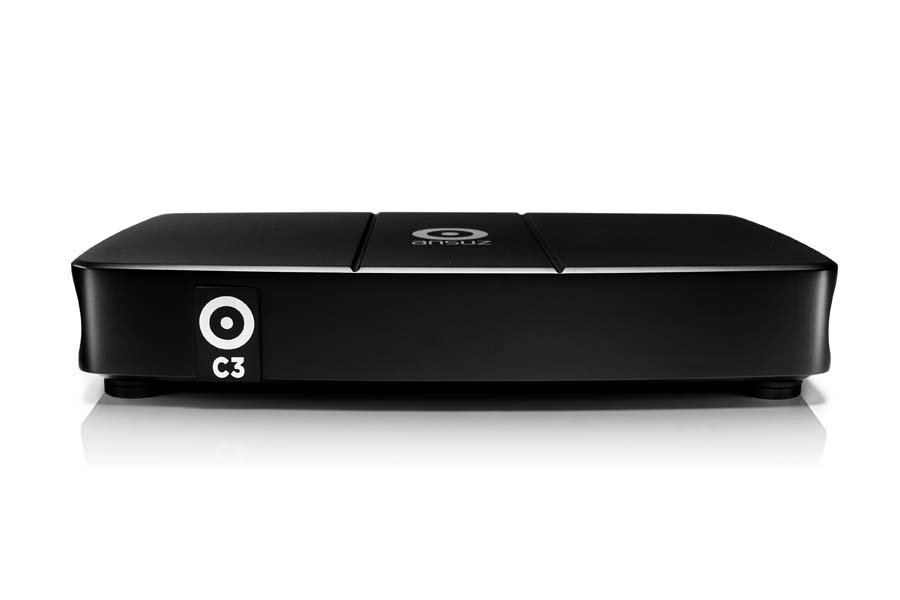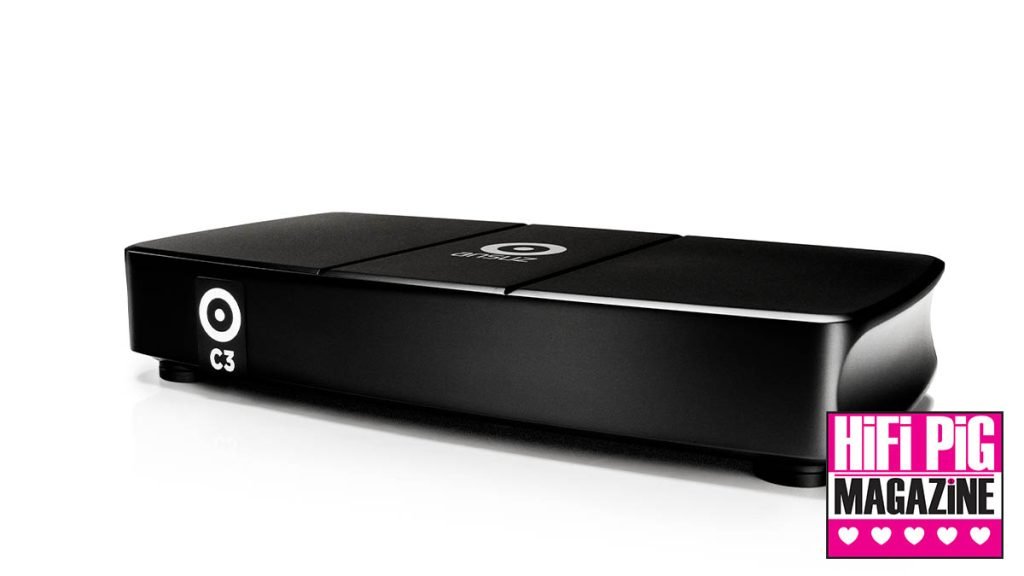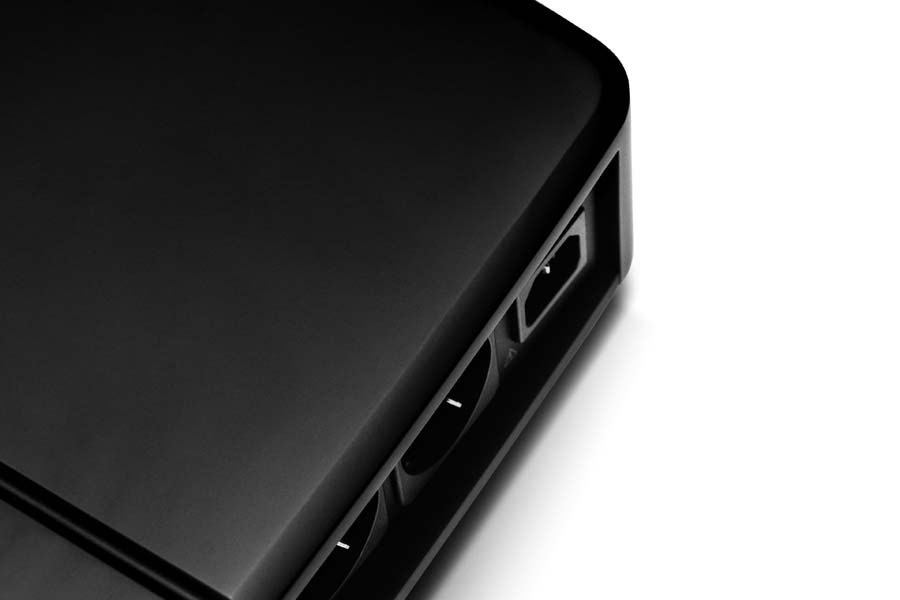ANSUZ MAINZ 8 C3 POWER DISTRIBUTOR REVIEW
Ansuz Mainz 8 C3 power distributor reviewed by Eric van Spelde for HiFi PiG
At 5,500 euro the Mainz 8 C3 is one of the most expensive power distributors I´ve had in my system to date. It´s far from being the most expensive power distributor from Danish company Ansuz, however; the C3 sits smack in the middle of a seven-strong range. An unnecessary indulgence or an indispensable cornerstone of any mildly ambitious HiFi set up?
´Power Distributor´ may not be an accurate description of what the Mainz C3 does, even though it features eight power outlets (Schuko as per most of Europe or US standard, as of now there´s no version featuring UK-standard power outlets) plus a single IEC inlet. However, it´s not a filter in the common sense either, nor is it an active power regenerator. Its main aim is to keep noise and resonances away from the power cables that feed your audio components, thus lowering the overall noise floor of the system. In fact, such is the importance that Ansuz places on a clean power supply to the rest of your audio system that it not only awards the power distributor ´component´ status in the context of an audio system, but moreover considers it the most important part of the system. You´d think “Sure, that´s what I would say in their place as a manufacturer of power distributors and cables, too” but Ansuz is in fact one of three brands – the others being Aavik and Borresen – that operate under the umbrella of Audio Group Denmark and between them, cover pretty much all bases when it comes to putting together a HiFi system.
Ansuz do offer some pretty radical strategies and technologies when it comes to cleaning up the act of an audio system´s power supply. First thing you notice is the enclosure. At first glance, it looks like it´s made from a single piece of aluminium, which is also supported by the weight (just over 5 kg) of the long, slim cabinet. However, it is not cold to the touch like a metal enclosure would be and that´s because it´s actually made out of a natural fibre-based composite material which reduces its mechanical influence.
As befits it being regarded as an audio component in its own right, its shape and orientation suggest the power distributor is meant to be placed in a HiFi rack rather than behind or under it – which posed me with a challenge as there´s no room for an audio rack in my system configuration. In fact, the remote-controlled line level preamp and its power supply as well as the music server that I have had as a review item at the time of testing, are under a sofa which in turn is flanked by four power amps that power the mid and high-frequency drivers of my Avantgarde horns which sit alongside them on either side. Along one side wall, there is just enough space for a turntable and phono preamp. Long story short – the only way to have the Mainz C8 provide the juice for all of the system apart from the turntable power supply and the Class D low-frequency amps with DSP in the Avantgardes with the power cables available, was to place the unit on its side! Obviously, this was not ideal as the component feet of course, were on the underside of the unit. In another configuration I tried when the music server arrived, I used the Ansuz in the orientation intended by its maker, providing the outlets for the digital front end – server and DAC – and the line level preamp only. The power outlets themselves, as well as the single IEC inlet, are, as befits the unit´s price tag, of very high quality and the cabinet´s appearance is one of understated elegance; however, being half a metre wide and over 26 centimetres deep with all power outlets in a single row on the rear side does restrict its flexibility of installation somewhat in comparison with more conventionally shaped power distributors. Of the eight outlets, one of the pair in the middle is marked in white – this is where you are supposed to connect the item that has the most other components connected to it; in my case, the line level preamp. Positive, zero, and earth connections on the power outlets are all star grounded to a precisely defined area within the unit that carries the lowest possible grounding impedance. This ensures that no voltage is transferred from the power distributor to the individual equipment power cables – apart from the mains voltage they are supposed to carry, obviously.

The Ansuz Mainz 8 C3 has 8 outlest with teh one marked in white intended for the item in your system with most other items attached to it
TESLA COILS
Instead of leading the mains voltage through a series of frequency-based filters – which often results in a loss of dynamics – Ansuz uses a principle called the ´Tesla Coil´ in all its power distributors. The key principle is to have two coils wound in opposite directions which both carry voltage. When one of the Tesla coils encounters a voltage spike, a counter spike is activated to eliminate the noise. Since noise spikes are pure voltage carrying virtually no charge, the noise cancellation is quite good but not perfect. Adding more Tesla coils in parallel increases the noise cancellation and this is why there are more of them as you go up the Ansuz range of power distributors. Also, while more basic models offer ´passive´ Tesla coils, more elaborate iterations like the C3 feature ´active´ Tesla coils that are current fed. This drops down the impedance of the coils and offers a better ability to eliminate noise – according to the manufacturer by a factor of three to four. The Mainz 8 C3 features 24 of what Ansuz calls ´Ansuz Active Tesla Coils´, six ´Active Cable Tesla Coils´, and three ´Active Zirconium Tesla Coils´. The individual properties of these three different types of Tesla coils are meant to complement and reinforce each other for the best possible noise reduction.
In addition, Ansuz uses ´dither technology´ – originating in radar tech – to ensure a greater signal strength and thus, a better signal-to-noise ratio. The Active Tesla Coils send pulsating signals at precisely defined frequencies in anti-phase, which amplifies the signal and lowers the background noise floor. The new range of Ansuz power distributors features a third-generation design, which through analysis and lots of listening, seeks to further optimise the frequencies at which the pulses are sent.

Mainz 8, like other Audio Group Denmark products eschews the use of aluminium and uses a fibre-based product for the enclosure
DOES IT WORK?
Yes – emphatically so, but in other and rather more subtle ways than one would expect. I used the Mainz C3 mostly in the main system at home, a rather elaborate affair that´s been developed (as mentioned) over the years and consisting of Avantgarde Duo XD speakers modified to work in a fully active set up using two pairs of monoblock single-ended triode tube amps (Audio Note Quest Low Gain with Audio Note 4300E 300B power valves and a late ´90s pair of Welter EbIIIs running TJ Full Music 2A3 power valves, modified with external power supply units, re-capped with the coupling capacitors doubling as a high pass crossover filter) and a custom version of Pink Faun´s Tube Pre line amplifier with separate outputs for the mid and high frequencies (the output capacitors of the latter having been sized to form another high pass crossover filter). The analogue front end consists of an Acoustic Signature Challenger Mk3 turntable with two motors and an upgraded platter having had eight ´Silencers´ inserted. Acoustic Signature TA-1000 and Levar Ultimate Carbon tonearms were installed during the test period, with Hana ML and Miyajima Takumi L cartridges. Power cables are from Furutech, Pink Faun, and ASR. With the exception of one of the Pink Faun power cables – feeding the phono stage PSU – none of them are particularly expensive cables or of very elaborate construction. All of this, plus a CD playback arrangement, has been moved from my former apartment in Rotterdam, where I had installed a separate mains spur, ending in a permanently installed DIY power distributor with star earthing and Pink Faun wiring – to my partner´s apartment in Stuttgart where none of this is present. Since the move, a basic Rittal distribution block with a captive Belden lead provided the power connections to most of my equipment.
Later on, a Pink Faun 2.16 Ultra music server joined the fray, and the Mainz 8 C3 was relegated to providing power to the server using a Pink Faun Ultra Power Cord (3,750 euro for a 2 metres long cable) that was supplied with it, my older Audio Note DAC 3.1X NL Signature D/A converter (further modified by the people behind Pink Faun) and the line level preamp. Similarly, in another configuration the Ansuz was tried in front of a rebuilt Gryphon Orestes 4-box phono stage, in a system that comprised of Avantgarde XA pre and power amps and the new Avantgarde Duo G3 speakers, both in semi-active and fully active iTron mode.
Let´s start with what the Mainz 8 C3 doesn´t do. It doesn´t magically make hiss and hum in a system (of which I have a fair amount since the move) disappear. It doesn´t seem to block any DC present in the mains, so a transformer that hums in sympathy (the acid test is to determine whether the hum comes from the speakers, or the transformer itself) is still going to hum; the same with components that are simply placed too close to one another (another unfortunate consequence of moving house).
What it does do is dramatically lower the noise floor within the music being played. This is particularly noticeable in a system like mine where passive crossover filters, feedback loops in amplifiers et cetera have been consistently eliminated with simple circuitry comprising high-quality components in the signal path. The soundstage becomes wider, deeper, and much clearer. Avantgardes are not the easiest speakers to make ´disappear´ because of their physical stature with those 27” diameter midrange horns, particularly in a smaller room, but with the Ansuz providing the juice for the front end and amplifiers this feat was largely achieved. There was more fine detail to be savoured especially in the higher registers, but in a smooth, relaxed, self-effacing way. The perceived tonal balance of the system remained unaffected, as was the capability of the large horns, supported by two pairs of 12-inch woofers and 1,000 Watts of DSP-controlled low-frequency amplification per channel, to provide firecracker dynamics and lightning speed when called upon to do so. With all amplifiers fed through the C3, the overall effect was that of more refinement overall, letting the system get on with it in an easy, unforced, and natural way without giving the impression that the sound had been ´sanitized´ by any means. When used with the analogue front end in the system and running the new Duos G3 in a rather larger room, the effect was similar but to a lesser extent; it was much the same with the digital front end consisting of the Pink Faun music server and Audio Note DAC. It has to be noted that both the Gryphon Orestes phono stage and the Pink Faun 2.16 Ultra feature very elaborately designed power supplies, to the extent that Pink Faun recommends plugging the unit directly into a mains outlet without any power conditioners or filters.
CONCLUSION
In my personal system, the Ansuz Mainz8 C3 made the best out of a suboptimal situation by providing the equipment´s power supplies with a virtually noise and resonance-free mains output (keep in mind that when electrically amplifying a music signal, you are not ´amplifying´ the source signal from thin air but modulating the voltage supplied by the mains with it). To that end, it´s bristling with innovative technologies that dramatically lower the noise floor without actually filtering the mains supply in the conventional sense, which means dynamics remain unaffected. For best results, you will probably still want a separate mains spur for your audio equipment if at all possible, and to keep switched mode power supplies (like the ´wallwarts´ used for turntable motors etc.) from being in the same electrical network as the audio equipment, but even without any of these, the Mainz8 C3 provided a significant improvement in terms of stereo depth, width, and separation, overall clarity and detail and did this in such a way that you could virtually sense the system ´relaxing´, being to a large extent freed from ´grain´ and ´hash´ from the lower mid-band upwards, and getting on with the business of conveying the musical message to the listener. It worked equally well with all the power cables I tried, but the use of Ansuz power cables would probably be preferable as both have been developed to work with each other as a system. It´s very well built and presented as befits its price tag and is completely intuitive to use and get the best from it. I would say the level of improvement would justify its inclusion in well-considered system setups with a total investment from the low/mid five-figure ranges upwards.
My only gripes with the Mainz8 C3 are twofold: a) I cannot afford one at this point, and b) its shape and layout of the power outlets proved to be less than practical in the context of my system, the available space and the number and lengths of power cables available. The latter point is of no consequence if your system, like most at this level, resides in an audio rack, provided you have a shelf free to place it on – which is the way the Mainz8 series was designed to be used.
AT A GLANCE
Build Quality And Features
A slim, elegant, black box from a non-metallic, natural fibre-based composite material, that feels substantial
The component feet are well-designed and understated in appearance
Eight EU-type power outlets on the back, of very high mechanical quality, oriented diagonally
Classy packaging without being excessive, the item is well protected by the sort of high-density foam that you find with professional quality socket sets etc., and comes in a soft cloth bag
Sound Quality
Dramatically lowers the noise floor on equipment good enough to show it, resulting in improvements in the soundstage, separation, transparency, and detail
Makes for a more relaxed and natural listening experience
Value For Money
It´s expensive, but well worth it if your system is up to it
We Loved:
The improvement in sound quality with anything that we ran from the power distributor
The sheer quality of the power outlets
The elegant, understated design
We Didn´t Love So Much:
We would have liked to have had a little more flexibility in the placement of the unit
Elevator Pitch Review
The third-generation Ansuz power distributors use extremely advanced and innovative technologies to keep noise and resonances from entering the power supplies of your audio equipment, without the ill effects associated with power filters. Sitting in the middle of the range, the Mainz 8 C3 offers most of the refinements of the (still) more expensive variants, like three different versions of the active Tesla coils that complement each other, and dither technology. As such it represents a significant step up from the more basic models.
Price: €5500
Eric van Spelde
SUPPLIED BY AUDIO GROUP DENMARK






















































































































































































